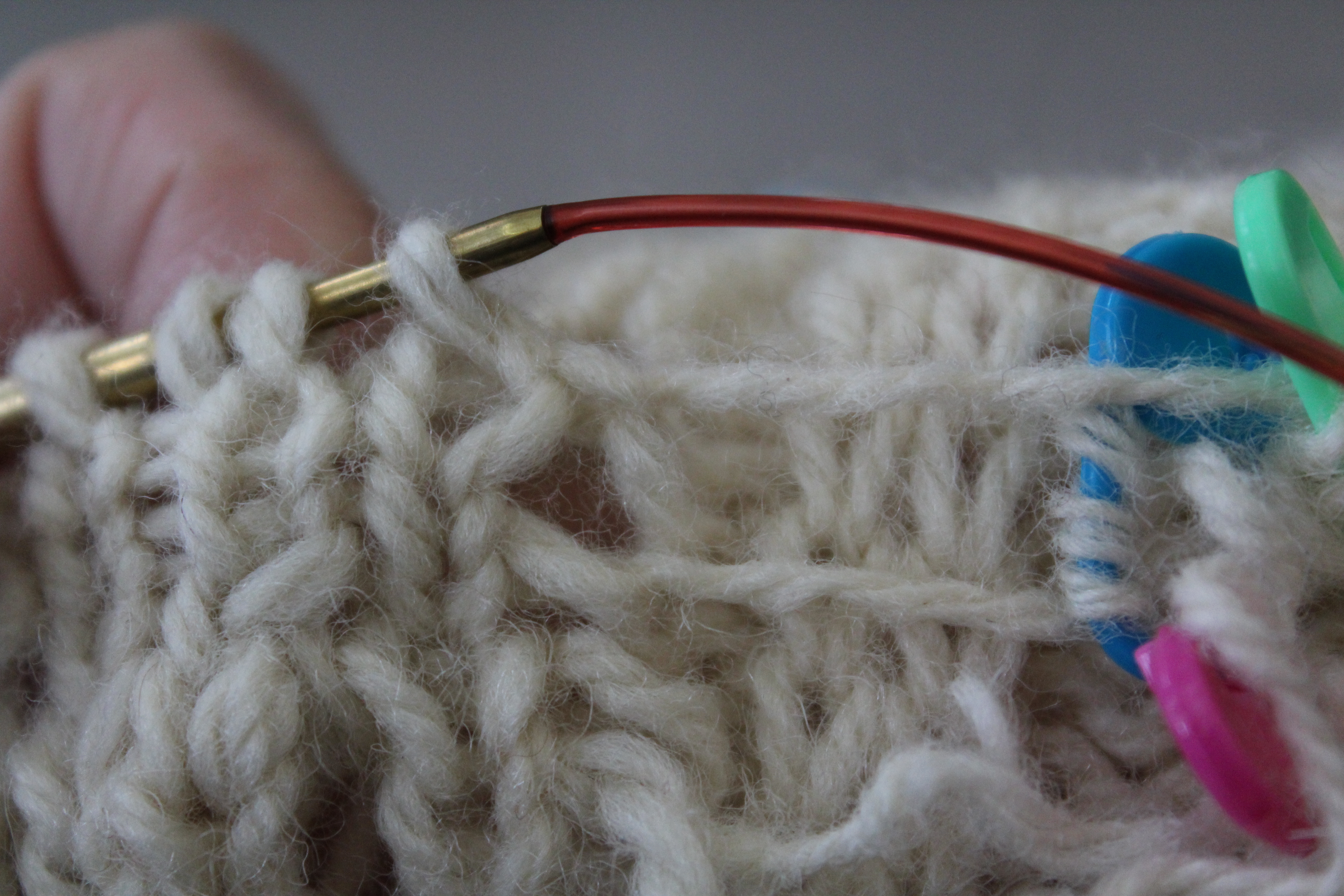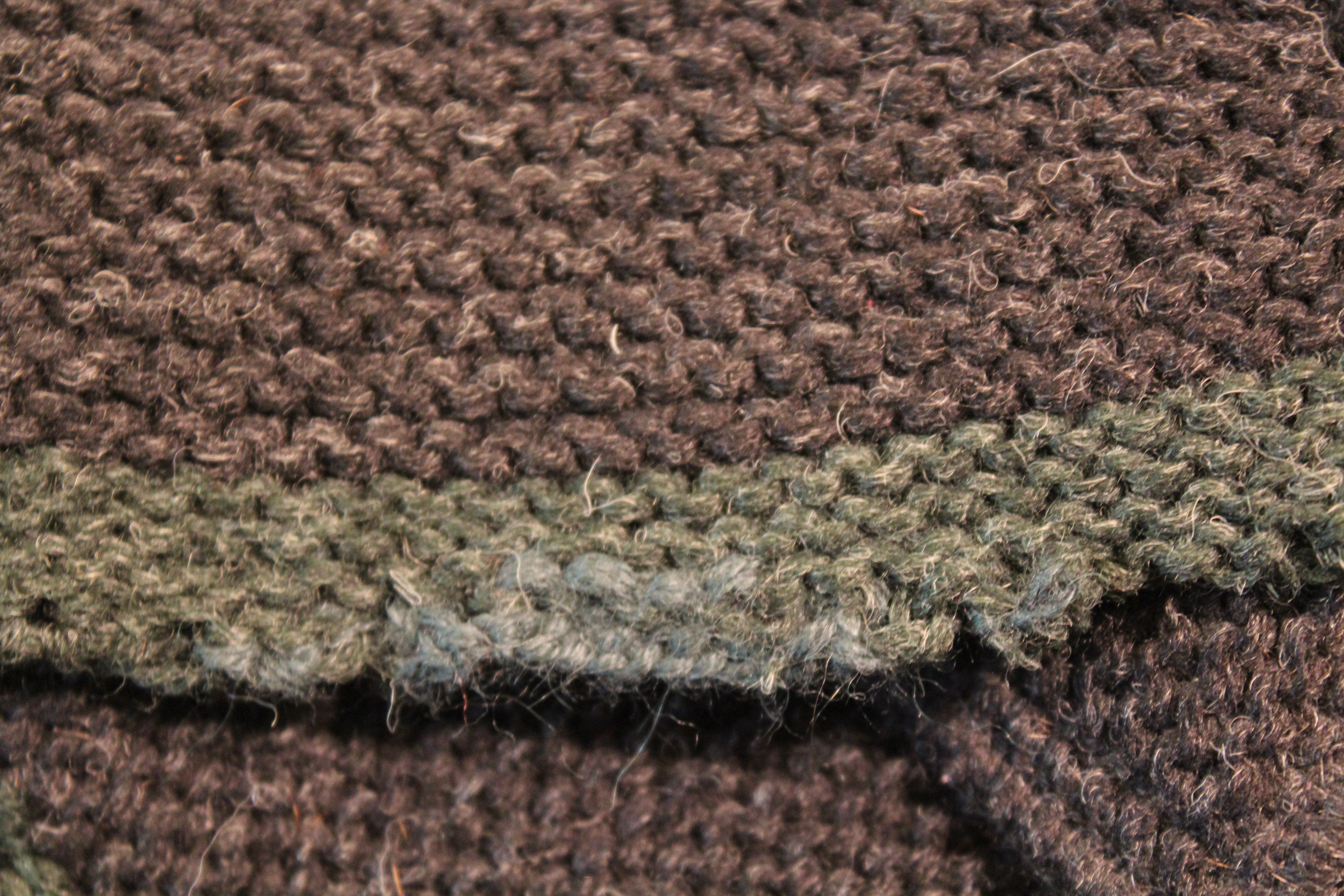 |
| working on repairs |
As you are putting away your holiday decorations, you notice it: a hole, a tear, a rip or an unraveled bit of yarn. Somewhere along the way this holiday season your childhood Christmas stocking, or that bit of lace your grandmother made, or other family heirloom has gotten a little beat up.
What do you do?
I’ve written before about checking your knit or crochet items to make sure they are staying well-cared-for, but what happens when the damage is already done? What do you do?
First, make sure that the stressors on the item have been removed. If the stocking was stuffed full of gifts, remove them. If the lace tablecloth was hanging off the side of the table, move it to a more supported location.
 |
| A recent Christmas Stocking Repair, nearly finished. I was fortunate to be able to closely match the red and the cream. |
Then, take a deep breath. Old knitted and crochet objects have a wonderful thing going for them: the stitches and yarn have been sitting in the same way for a very long time. They’ve settled and, perhaps in the case of wool, even felted a little bit. That means unless you are pulling and tugging on the object, the stitches should stay in place and unravel no further. If the yarn or fibers aren’t too delicate, fold the object up and put it in a bag that protects it from sun and dust. If it’s plastic, don’t seal the bag: it can trap moisture in with the fibers, which isn’t ideal.
Next, get on the phone or the internet and see if you can find a Local Yarn Store. If not, see if you can find a local museum or historical society that might deal with textiles. Often someone will know of someone who might have the skills to repair your object.
 |
| Repairs to the edge of a sweater. |
Then, think. Before you talk to someone about repairing your heirloom
determine your goals. Are you looking to restore it to it’s former glory? Do you want to just have it fixed so you can continue using it? What is feasible for caring for your heirloom in the future?
A local knitter, crocheter or stitcher of some great experience might be skilled enough to repair holes and return your heirloom to former use, but they might not have the resources to do a perfect restoration. On the other hand, they might be more affordable. Meanwhile, someone affiliated with a museum might have more resources to do a full restoration of your heirloom, but it will probably cost more.
Making a decision about your commitment to keeping the heirloom safe and preventing it from deteriorating further is also important. If you plan to keep using the heirloom, it’s not feasible to have it under glass. Sometimes the best ways of preserving textiles is to not use them, which can be problematic if the reason you love a heirloom is because of it’s tradition of use.
 |
| Repairs to the arm of a person on a stocking – not all color matches can be perfect. |
Personally, I fall on the side of loving and using family heirlooms. I’m careful about how I handle and store them, but it doesn’t prevent me from using the object. As someone who creates, I think that useful objects (like furniture, clothing, blankets and many textiles) lose some of their meaning when they are no longer able to be used. And if the object takes some damage? Well, I’m fortunate enough to be able to make repairs myself.


